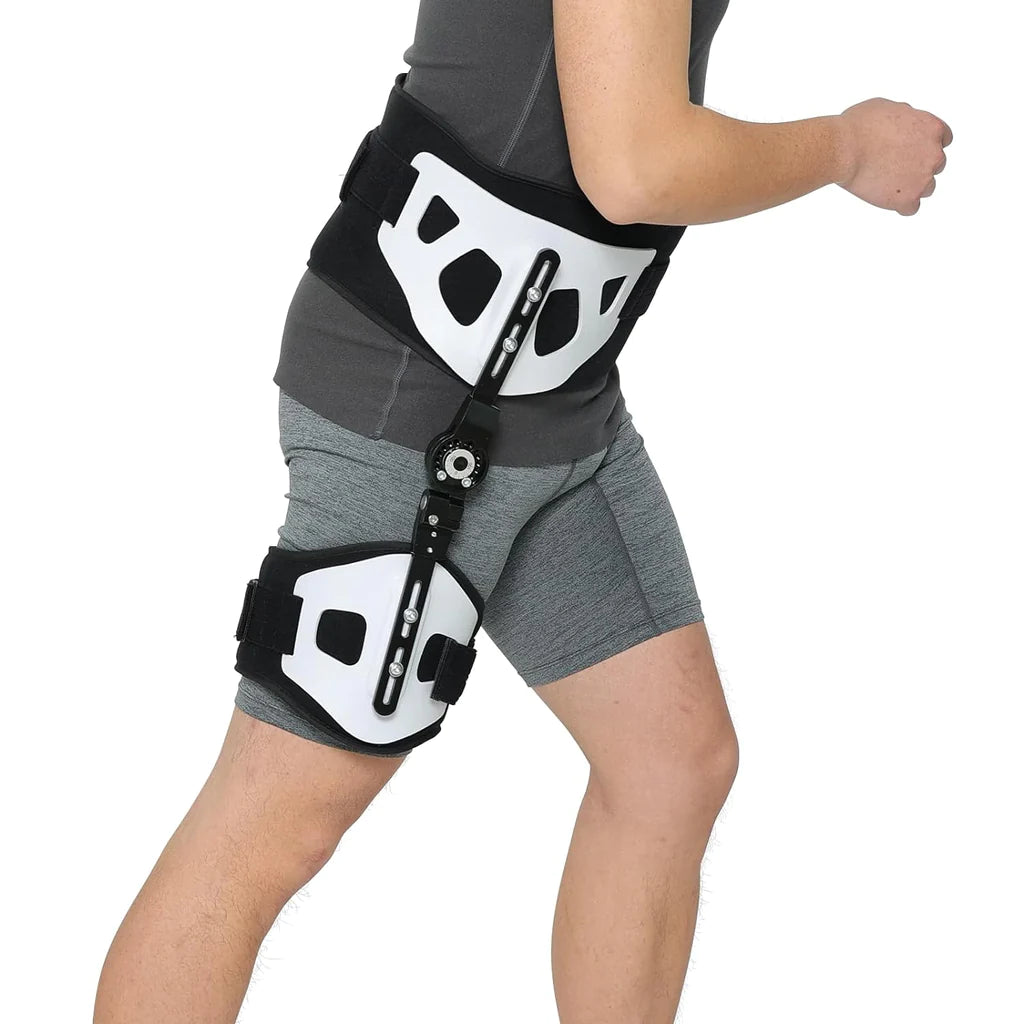News RSS
Ankle Foot Orthosis
Ankle Foot Orthosis Fixed AFOs interfere with the child's ability to feel the floor through their feet and may interfere with performance of transitional movements, such as moving from sitting to standing. Orthoses for the Muscle Disease Patient Ankle–foot orthoses (AFOs) are used in two ways: first as an aid for ambulation, providing both support and assistance and allowing the patient to move through the various stages of gait. The AFO can be articulated at the ankle with various types of ankle joints that will limit or assist dorsiflexion and plantarflexion as needed. Alternatively the AFO can have a solid...
Mastering Hip Brace Recovery: Post-Surgery Essentials
Using a hip brace after surgery is a common and critical aspect of recovery for patients who have undergone hip surgery or experienced a hip dislocation. Here's an in-depth look at the various aspects of using a hip brace, answering common questions and concerns: Will I be required to wear a hip brace? The necessity of wearing a hip brace post-surgery depends on several factors: Type of Surgery: Certain procedures, like hip replacements or repairs of hip fractures, often require a brace. Severity of Injury: More severe injuries may necessitate the use of a brace to ensure proper healing. Patient's...
Mastering Spinal Health: A Guide to Back Braces
Comprehensive Guide to Lightweight Back Braces: Enhancing Spinal Health and Preventing Back Pain In our continuous effort to provide insightful and practical health advice, we delve into the world of lightweight back braces, a pivotal tool in spinal health and back pain prevention. Understanding the intricate details of these braces, their proper application, and the broader context of maintaining spinal health is crucial. This comprehensive guide aims to surpass the existing content in thoroughness and applicability, ensuring you have the most informative and practical advice at your fingertips. Understanding Lightweight Back Braces: Function and Benefits Lightweight back braces have emerged...
Mobilization Braces for Elbow Rehabilitation
Mobilization braces are specialized medical devices designed to aid in the rehabilitation and treatment of joint stiffness, particularly in the elbow. They work by exploiting the viscoelastic properties of soft tissues to gradually increase the range of motion (ROM) in the joint. There are two main types of mobilization braces: dynamic and static, each with their specific characteristics and use cases. Dynamic Progressive Mobilization Braces Mechanism: These braces produce continuous stimulation to the joint, which over time can lead to an inflammatory process. Application: They are less commonly used due to the potential for inflammation but can be effective in...
Adjustable ROM Braces: Key to Injury Recovery
The use of braces with adjustable Range of Motion (ROM) plays a critical role in the rehabilitation process following injuries or surgeries, particularly concerning elbow fractures. These braces are designed to allow controlled movement, facilitating healing without causing further damage to the tissue. Here's a detailed guide on how to use these braces in different scenarios: Normal Condition (Intact Ligaments): Initial Phase: In cases where the ligaments are intact, an elbow brace is set at a 90° flexion with the forearm in an intermediate position. This setup is crucial in the acute phase immediately following an injury or surgery. Progressive...
Tags
- All
- ACL injury rehabilitation exercises
- ACL Injury Symptoms and Diagnosis
- ACL recovery
- ACL rehabilitation
- ACL surgery
- Adjustable Cervical Neck Collar
- Ankle Braces
- anterior cruciate ligament (ACL) tears
- Back braces
- best knee braces
- Best MCL brace for sports injuries recovery
- best unloader knee brace
- Braces & Sleeves Guide
- Cervical Collar
- cervical collars for neck support
- Cervical Neck Collar
- Cervical Orthoses
- Cervico thoracic Orthoses
- Custom Knee Braces for ACL Support
- Duration of wearing knee brace for MCL tear treatment
- HINGED WRIST HAND ORTHOSIS
- Hip Braces
- hip braces and splints
- hip replacement recovery
- How to heal knee ligament injury with braces
- Jaylen Rosga
- Kinee injuries
- Knee Brace Brands
- Knee Brace Selection
- knee braces
- Knee Joint
- Knee Osteoarthritis
- Knee Support
- Lumbosacral orthosis
- Lumbosacral orthosis Support Excellence
- Mastering Hip Brace Recovery
- Measure for Knee Sleeves
- Neck Brace Support
- Non-surgical MCL injury treatment options
- OA unloader knee brace
- Orthosis for Spinal Hyperextension
- orthosis for spinal support
- Orthosis with Swivel Sternal Pads
- Postoperative Neck Support
- purpose of a hinged elbow brace
- Recommended Braces and Sleeves
- Rehab exercises for MCL sprain with brace support
- rehabilitation aspects of ankle braces
- soft braces
- Tips For Selecting a Medical Walking Boot and Our List of Top Rated Boots
- Unloader Knee Braces
- User experiences with cervical orthosis
- Using knee braces for sports post-ACL tear
- WRIST HAND ORTHOSIS

